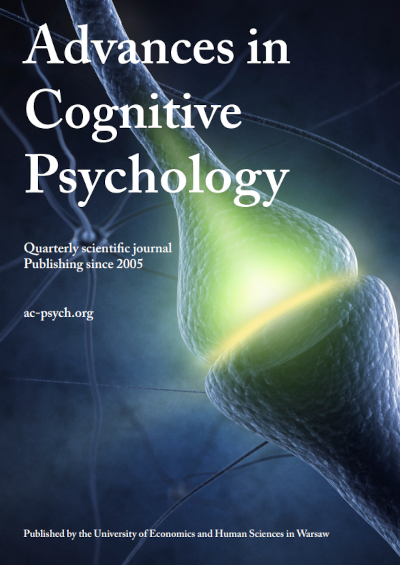Archive of all online content
-
Volume 21 Issue 4
pp. 309-500
(16 November 2025) -
Volume 21 Issue 3
pp. 212-308
(2 September 2025) -
Volume 21 Issue 2
pp. 120-211
(25 May 2025) -
Volume 21 Issue 1
pp. 1-93
(11 March 2025)
-
Volume 20 Issue 4
pp. 237-388
(20 November 2024) -
Volume 20 Issue 3
pp. 158-236
(19 August 2024) -
Volume 20 Issue 2
pp. 80-157
(24 June 2024) -
Volume 20 Issue 1
pp. 1-79
(1 March 2024)
-
Volume 19 Issue 4
pp. 1-105
(27 December 2023) -
Volume 19 Issue 3
pp. 211-333
(25 July 2023) -
Volume 19 Issue 2
pp. 111-200
(30 June 2023) -
Volume 19 Issue 1
pp. 1-110
(31 March 2023)
-
Volume 18 Issue 4
pp. 243-303
(31 December 2022) -
Volume 18 Issue 3
pp. 165-202
(30 September 2022) -
Volume 18 Issue 2
pp. 85-164
(30 June 2022) -
Volume 18 Issue 1
pp. 1-84
(31 March 2022)
-
Volume 17 Issue 4
pp. 250-291
(31 December 2021) -
Volume 17 Issue 3
pp. 193-249
(30 September 2021) -
Volume 17 Issue 2
pp. 99-192
(30 June 2021) -
Volume 17 Issue 1
pp. 1-98
(31 March 2021)
-
Volume 16 Issue 4
pp. 291-369
(31 December 2020) -
Volume 16 Issue 3
pp. 176-290
(30 September 2020) -
Volume 16 Issue 2
pp. 85-175
(30 June 2020) -
Volume 16 Issue 1
pp. 1-84
(31 March 2020)
-
Volume 15 Issue 4
pp. 236-317
(31 December 2019) -
Volume 15 Issue 3
pp. 169-235
(30 September 2019) -
Volume 15 Issue 2
pp. 75-168
(30 June 2019) -
Volume 15 Issue 1
pp. 1-74
(31 March 2019)
-
Volume 14 Issue 4
pp. 150-208
(31 December 2018) -
Volume 14 Issue 3
pp. 62-150
(30 September 2018) -
Volume 14 Issue 2
pp. 38-61
(30 June 2018) -
Volume 14 Issue 1
pp. 1-37
(31 March 2018)
-
Volume 13 Issue 4
pp. 267-322
(31 December 2017) -
Volume 13 Issue 3
pp. 190-266
(30 September 2017) -
Volume 13 Issue 2
pp. 121-189
(30 June 2017) -
Volume 13 Issue 1
pp. 1-120
(31 March 2017)
-
Volume 12 Issue 4 (special issue)
pp. 150-235
(31 December 2016) -
Volume 12 Issue 3
pp. 130-149
(30 September 2016) -
Volume 12 Issue 2
pp. 67-129
(30 June 2016) -
Volume 12 Issue 1
pp. 1-66
(31 March 2016)
-
Volume 11 Issue 4
pp. 118-135
(31 December 2015) -
Volume 11 Issue 3
pp. 64-117
(30 September 2015) -
Volume 11 Issue 2
pp. 31-63
(30 June 2015) -
Volume 11 Issue 1
pp. 1-30
(31 March 2015)
-
Volume 10 Issue 4
pp. 119-155
(31 December 2014) -
Volume 10 Issue 3
pp. 81-118
(30 September 2014) -
Volume 10 Issue 2
pp. 32-80
(30 June 2014) -
Volume 10 Issue 1
pp. 1-31
(27 February 2014)
-
Volume 9 Issue 4
pp. 156-223
(31 December 2013) -
Volume 9 Issue 3
pp. 112-155
(24 October 2013) -
Volume 9 Issue 2
pp. 53-111
(30 June 2013) -
Volume 9 Issue 1
pp. 1-52
(31 March 2013)
-
Volume 8 Issue 4
pp. 267-295
(31 December 2012) -
Volume 8 Issue 3
pp. 210-266
(27 September 2012) -
Volume 8 Issue 2
pp. 70-209
(28 June 2012) -
Volume 8 Issue 1
pp. 1-69
(29 March 2012)
-
Volume 7 Issue 2
pp. 55-156
(31 December 2011) -
Volume 7 Issue 1
pp. 1-54
(31 March 2011)
-
Volume 6 Issue 6
pp. 1-141
(31 December 2010)
-
Volume 5 Issue 5
pp. 1-134
(31 December 2009)
-
Volume 4 Issue 1
pp. 1-14
(31 March 2008)
-
Volume 3 Issue 4
pp. 419-465
(31 December 2007) -
Volume 3 Issue 3
pp. 363-417
(30 September 2007) -
Volume 3 Issue 1
pp. 1-361
(31 March 2007)
-
Volume 2 Issue 4
pp. 239-276
(31 December 2006) -
Volume 2 Issue 2
pp. 99-237
(30 June 2006) -
Volume 2 Issue 1
pp. 1-97
(31 March 2006)
-
Volume 1 Issue 1
pp. 1-16
()
Volume 10 Issue 4 (2014)
The Equiprobability Bias from a Mathematical and Psychological Perspective
Nicolas Gauvrit, Kinga Morsanyi

Nicolas Gauvrit, CHart Lab, École Pratique des Hautes Études, 4-14 rue Ferrus, 75014 Paris, France.
E-mail: ngauvrit@me.com
The equiprobability bias (EB) is a tendency to believe that every process in which randomness is involved corresponds to a fair distribution, with equal probabilities for any possible outcome. The EB is known to affect both children and adults, and to increase with probability education. Because it results in probability errors resistant to pedagogical interventions, it has been described as a deep misconception about randomness: the erroneous belief that randomness implies uniformity. In the present paper, we show that the EB is actually not the result of a conceptual error about the definition of randomness. On the contrary, the mathematical theory of randomness does imply uniformity. However, the EB is still a bias, because people tend to assume uniformity even in the case of events that are not random. The pervasiveness of the EB reveals a paradox: The combination of random processes is not necessarily random. The link between the EB and this paradox is discussed, and suggestions are made regarding educational design to overcome difficulties encountered by students as a consequence of the EB.
Keywords: equiprobability bias, subjective probability, complexity, randomness, uniformityGaining the Upper Hand: Evidence of Vertical Asymmetry in Sex-Categorisation of Human Hands
Genevieve L. Quek, Matthew Finkbeiner

Genevieve Quek, Department of Cognitive Science, Level 3, 16 University Avenue, Macquarie University, Sydney, NSW 2109, Australia.
E-mail: genevieve.lauren.quek@gmail.com
Visual perception is characterised by asymmetries arising from the brain’s preferential response to particular stimulus types at different retinal locations. Where the lower visual field (LVF) holds an advantage over the upper visual field (UVF) for many tasks (e.g., hue discrimination, contrast sensitivity, motion processing), face-perception appears best supported at above-fixation locations (Quek & Finkbeiner, 2014a). This finding is consistent with Previc’s (1990) suggestion that vision in the UVF has become specialised for object recognition processes often required in ”extrapersonal” space. Outside of faces, however, there have been very few investigations of vertical asymmetry effects for higher-level objects. Our aim in the present study was, thus, to determine whether the UVF advantage reported for face-perception would extend to a nonface object – human hands. Participants classified the sex of hand images presented above or below central fixation by reaching out to touch a left or right response panel. On each trial, a briefly presented spatial cue captured the participant’s spatial attention to either the location where the hand was about to appear (valid cue) or the opposite location (invalid cue). We observed that cue validity only modulated the efficiency of the sex-categorisation response for targets in the LVF and not the UVF, just as we have reported previously for face-sex categorisation (Quek & Finkbeiner, 2014a). Taken together, the data from these studies provide some empirical support for Previc’s (1990) speculation that object recognition processes may enjoy an advantage in the upper-hemifield.
Keywords: vertical asymmetry, upper visual field, lower visual field, attention, sex-categorisation, hands


